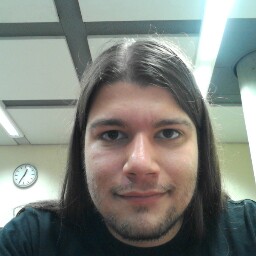Stefan R Brandl
from Albany, NY
Stefan Brandl Phones & Addresses
- 6 Stonehenge Ln, Albany, NY 12203 • 5184590896
Resumes

Stefan Brandl
view sourceUs Patents
-
Fluids For Immersion Lithography Systems
view source -
US Patent:7291569, Nov 6, 2007
-
Filed:Jun 29, 2005
-
Appl. No.:11/170200
-
Inventors:Francis Goodwin - Halfmoon NY, US
Stefan Brandl - Albany NY, US
Brian Martinick - Ballston Lake NY, US -
Assignee:Infineon Technologies AG - Munich
-
International Classification:H01L 21/00
-
US Classification:438800, 355 53
-
Abstract:Fluids for use in immersion lithography systems are disclosed. A resistivity-altering substance is introduced into a fluid, making it more conductive. The fluid is then disposed between an immersion head of a projection lens system and a semiconductor wafer during an exposure process. Because the fluid is conductive, electrostatic energy that may develop during the movement of the semiconductor wafer with respect to the projection lens system during the exposure process is discharged through the conductive fluid, preventing damage to an immersion head of the projection lens system, the semiconductor wafer, and sensors of a stage that supports the semiconductor wafer.
-
Post Exposure Resist Bake
view source -
US Patent:7396482, Jul 8, 2008
-
Filed:Oct 28, 2005
-
Appl. No.:11/262420
-
Inventors:Stefan Brandl - Albany NY, US
-
Assignee:Infineon Technologies AG - Munich
-
International Classification:B44C 1/22
-
US Classification:216 66, 438530, 438708, 430326
-
Abstract:A preferred embodiment of the invention provides a method for forming an integrated circuit. The method comprises forming a resist layer on a substrate. Preferably, the photoresist layer comprises a photo acid generator (PAG). Embodiments include irradiating the resist through a mask to generate a photoacid in the resist, heating the resist at a first temperature, and then heating the resist at a second temperature. Heating at the first temperature evaporates water from the resist. Heating at the second temperature deprotects the resist.
-
Method For Reducing Lithography Pattern Defects
view source -
US Patent:7470503, Dec 30, 2008
-
Filed:Apr 29, 2005
-
Appl. No.:11/119320
-
Inventors:Stefan Brandl - Albany NY, US
-
Assignee:Infineon Technologies AG - Munich
-
International Classification:G03F 7/26
-
US Classification:430311, 430329, 430331
-
Abstract:A preferred embodiment of the invention provides a semiconductor fabrication process. Embodiments include a method for removing contaminating particles from the surface of the wafer, such as in lithography. Embodiments also provide methods for repairing patterning defects caused by particles. The method comprises forming a resist layer over a substrate and a topcoat layer over the resist layer. The method further includes exposing the resist layer, and developing the resist layer a first time. Preferably, developing the resist layer the first time comprises dissolving a first portion of the topcoat layer in the developing solution. Embodiments further include spinning the substrate, developing the resist layer a second time after spinning the substrate. Preferably, developing the resist layer the second time comprises dissolving a second portion of the topcoat layer. Other embodiments provided include a topcoat layer that is insoluble in a developer solution, thereby requiring using a topcoat removal solution.
-
Method Of Spin Coating A Film Of Non-Uniform Thickness
view source -
US Patent:7662436, Feb 16, 2010
-
Filed:May 27, 2005
-
Appl. No.:11/139122
-
Inventors:Yayi Wei - Altamont NY, US
Stefan Brandl - Albany NY, US -
Assignee:Infineon Technologies AG - Munich
-
International Classification:B05D 3/12
-
US Classification:427240, 427261, 427402, 427425, 118 52, 118320, 438758
-
Abstract:Embodiments of the invention provide a method for spin coating a film onto a substrate. Preferred embodiments deposit a film, such as a resist, having a thickness gradient from the substrate's centrifugal center to its edge. The gradient may be linear or stepwise continuous, for example. Other embodiments of the invention provide a semiconductor fabrication method. The method comprises forming a resist layer having a predetermined thickness on a substrate. Preferably, the predetermining includes making swing curve measurements on a single test wafer that is coated according to embodiments of the invention.
-
Immersion Exposure Tool Cleaning System And Method
view source -
US Patent:20060250588, Nov 9, 2006
-
Filed:May 3, 2005
-
Appl. No.:11/120929
-
Inventors:Stefan Brandl - Albany NY, US
-
International Classification:G03B 27/52
-
US Classification:355030000, 355053000
-
Abstract:Methods of cleaning immersion exposure tools using ultrasonic waves and systems thereof are disclosed. An ultrasonic wave generator is coupled to the fluid of an immersion exposure tool, or to a component that makes contact with the fluid. The ultrasonic wave generator is activated, generating ultrasonic waves in the fluid that dislodge debris and particulates, cleaning the immersion exposure tool. The ultrasonic wave generator may be activated during an exposure process to vary the distance between the lens system and the wafer, increasing the process window.
-
Lithography Systems And Methods
view source -
US Patent:20080050680, Feb 28, 2008
-
Filed:Aug 24, 2006
-
Appl. No.:11/509367
-
Inventors:Stefan Brandl - Albany NY, US
-
International Classification:G03F 7/20
-
US Classification:430394, 430311, 430396
-
Abstract:Systems and methods of lithography of semiconductor devices are disclosed. A preferred embodiment comprises a method of exposing a workpiece. The method includes moving a workpiece along a plurality of exposure fields in a column in a first direction while alternatingly moving a lithography mask in a second direction and the first direction for the plurality of exposure fields in the column. The second direction comprises a direction opposite the first direction.
Googleplus

Stefan Brandl

Stefan Brandl

Stefan Brandl
Work:
Brandl Consulting Int. - CEO (1997)

Stefan Brandl

Stefan Brandl

Stefan “K3B2S” Brandl

Stefan Brandl
Myspace

Stefan Brandl
view sourceFriends:
Monika Noto Millefiori, Kerstin Hoppe

Stefan Brandl
view source
Stefan Brandl
view source
Stefan Brandl
view sourceFriends:
Marissa Haug, Sabrina Scheffold, Daniel Maul, Anna Slavutskaya, Franzi Geisinger

Stefan Brandl
view source
Stefan Brandl
view sourceTritt Facebook bei, um dich mit Stefan Brandl und anderen Nutzern, die du ...
Youtube
News

The Latest: Trains Crashed in Inaccessible Area
view source- Federal police spokesman Stefan Brandl says the stretch of line on which the two trains crashed is squeezed between the Mangfall river on one side and a forest on the other, which is making rescue operations very difficult.
- Date: Feb 09, 2016
- Category: World
- Source: Google
Get Report for Stefan R Brandl from Albany, NY







